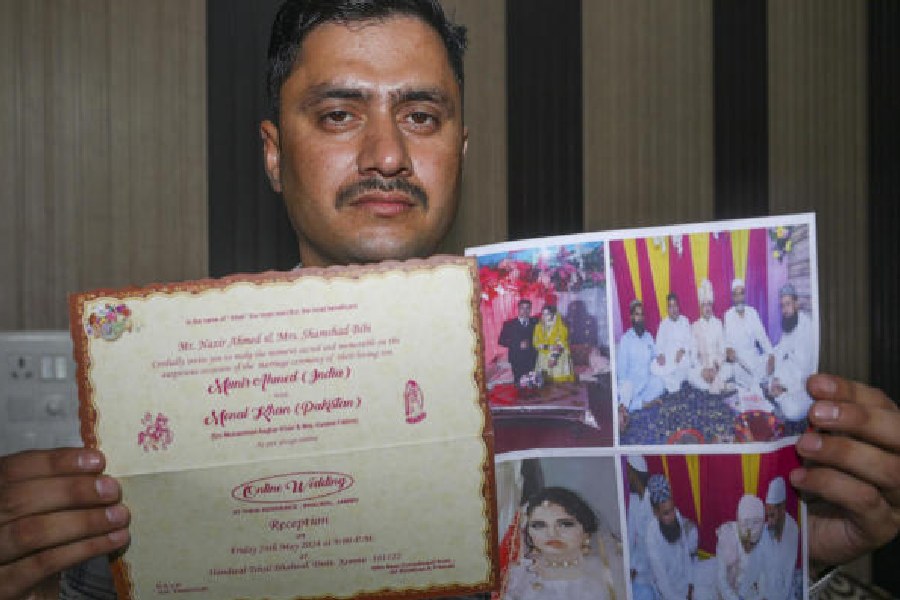
MALAVIKAGNIMITRAM: THE DANCER AND THE KING By Kalidasa, Penguin, Rs 399
"Pleasure blooms in Kalidasa's poems/ like a full bouquet of fragrant flowers" - Bana, seventh century Sanskrit poet
Where and how should we place this splendid play within the entire oeuvre of Kalidasa? Should we regard it as an all-time classic comparable to Abhijnana Sakuntalam, or as an example of his first creative phase when he was still honing his legendary skills? The translator, Srinivas Reddy, is himself ambivalent when he tries to answer this basic query. On the one hand, he says that this play is "the least refined work of the most celebrated Sanskrit poet," while on the other he claims this is "not only a great work of world literature, but also a portal into the budding mind of a poetic genius and the dynamic cultural milieu that produced him."
I would like to question his first assessment and claim that this early creation is by no means 'unrefined'. The neat and compact scenic divisions into five full-fledged acts, the resplendent language of the play, the fast and brisk pace of the drama which unfolds spontaneously as it progresses, the striking and artful upamas - Kalidasa's hallmark - and, above all, the combination or intermix of delicate verse and enlivening prose prove beyond doubt that Malavikagnimitram is by no way 'unrefined'.
In fact, the second assessment appears much more acceptable which states that it is not merely a timeless creative product but also a witness to "all the qualities of his mature talents [that] are evident here in embryonic form." In short, Kalidasa, like all great artists, evolved and improved with time. His Malavikagnimitram proceeds directly towards Sakuntala. The difference between the two plays rests on the difference in themes or storylines with Sakuntala exploring a much more serious, even profound, subject.
The play under review, in its English translation by Reddy, not only anticipates Sakuntala but also Meghaduta and Kumarasambhavam because the short lyrics found in the play lead straight to his later extended epics or epic-like texts. Take, for example, the following lyric which pictures the rising desire and impatience of the king-cum-lover, Agnimitra: "When word of her reached me, I sheltered a desire/ and the tree of love took root./ Then seeing her, my passion grew/ like a new leaf,/ and the touch of her hand a blossom/ as my hair stood on end./ Weary now, let me taste the fruit." The famous Kalidasa signature of upama (like a new leaf) and the heartfelt spontaneity of the verse, which seeks to hide nothing, reminds us of Yaksha's lovelorn disposition in Meghaduta and Shiva's passionate exchange with Uma in Kumarasambhavam.
I have just quoted one verse to drive home my point. Indeed, there are many such lyrical interludes in the slim text which concentrate primarily on romantic love's variegated dispositions. What makes this argument even stronger is the proliferation or abundance of Kalidasa's trademark upamas glistering throughout the text. One instance of this similarity, continuity and progress strikes us when Ganadasa, the dancer-teacher, ruminates: "When a teacher's art is imparted to a worthy student/ its quality changes,/ like cloud-water turning to pearl/ in an ocean oyster." This is Kalidasa par excellence. The one line similes in this text acquire glorious amplifications in Meghaduta and Kumarasambhavam and turn into unforgettable extended or epic similes.
The storyline of this play is essentially simple and unidirectional. There are no subplots. King Agnimitra falls madly in love with the court-dancer, Malavika, and seeks the help of his vidusaka, Gautama, to facilitate their union. Moreover, Malavika herself has also fallen in love with the king and she seeks the help of her friends and attendants who advise her on how she should proceed. The lovers need to be cautious and prudent because this exchange of hearts is, to follow moralistic norms, forbidden.
A host of characters come and go, to work out their union, and all of them are finely drawn. In this particular context, the supportive roles played by Kaushiki, the ascetic nun; by Gautama, who lays down the plot with admirable finesse, by the queen who ultimately accepts the ties between her husband and Malavika as inevitable, and by Iravati, the king's mistress, deserve special mention. The friends or 'sahacharis' of Malavika are earlier embodiments of Anasuya and Priyamvada whom we encounter in Sakuntala. The last act, which celebrates the union of Malavika and Agnimitra, is superbly etched. An example of the consummate artistry of Kalidasa is evident in the following dialogue which leads to the denouement:
"Dharini (Queen): Go Jayasena, quickly bring her a fine silk veil.
Jayasena: As the Queen commands (exits and returns holding a silk veil). My queen, here it is.
Dharini: (draping Malavika with the veil) May the noble king accept her now.
Agnimitra: My queen, I can't challenge your command.
Kaushiki: Oh, she's been accepted!
Gautama: Ah, the queen is most gracious."
The passage just quoted draws our attention to yet another quality, namely, the nature and standard of translation. Reddy has adopted the simple, direct, colloquial, modern English idiom, which is easily understandable. He has interspersed this effective prose with lyrical passages replete with poignant reflection and articulation of romantic love, which is consummated right at the end in the last act. The translator has described his objective in the following terms, "In the present translation I have tried to develop a diction that reflects the current spoken rhythms of colloquial English while keeping in the mind the text's ancient courtly setting". It goes without saying that his attempt has been crowned with success.
When I tend to close the book I recall the racy and vibrant prose dialogues and, above all, the poetic descriptions and reflections which invest the language with another dimension, pointedly lyrical and mellifluous. In fact, I remember the masterly verse for quite some time ever after closing the book because it is well-nigh difficult to forget a description such as: "Her body expressed deep meanings/ concealed in words,/ her footfalls in rhythm/ merged into feelings,/ while her graceful arms flowed/ in line with her imagination/ as emotion displaced emotion/ in a display of passion."










